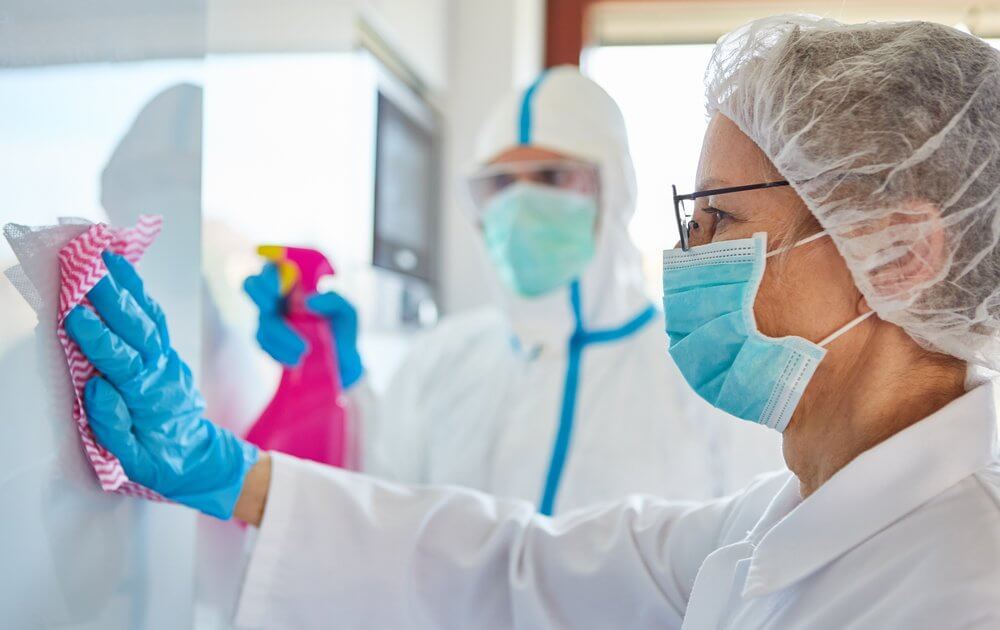Medical Cleaning
Medical Cleaning
- February 1, 2024
- Posted by: OZK

The Importance of Medical Cleaning: A Practical Overview
Medical cleaning plays a pivotal role in maintaining a safe and hygienic environment within healthcare facilities. While the significance of cleanliness in healthcare settings is universally understood, being essential to prevent the spread of infections, the specific protocols and practices involved require some explanation.
The Role of Medical Cleaning in Infection Control
Medical cleaning is not merely about aesthetics; it is a critical component of infection control in healthcare settings. Hospitals, clinics, and other medical facilities are breeding grounds for bacteria and viruses, making meticulous cleaning a priority. Contaminated surfaces can contribute to the transmission of healthcare-associated infections (HAIs), impacting vulnerable patient populations.
Target Areas for Medical Cleaning
Patient Rooms
Thorough cleaning of patient rooms is essential to prevent the spread of infections. High-touch surfaces such as bed rails, doorknobs, and light switches are given special attention.
Operating Rooms
Surgical environments demand a higher level of cleanliness. Sterilization of surgical instruments, disinfection of surfaces, and meticulous floor cleaning are imperative to minimize the risk of postoperative infections.
Waiting Areas and Common Spaces
Areas where patients, visitors, and staff congregate require regular cleaning to prevent the transmission of germs. This includes cleaning and disinfecting chairs, tables, and other frequently touched surfaces.
Medical Equipment
Cleaning and disinfecting medical equipment are essential to prevent cross-contamination. This includes items like diagnostic tools, monitoring devices, and treatment apparatus.
Protocols and Standards in Medical Cleaning
Use of Hospital-Grade Disinfectants
Medical cleaning involves the use of disinfectants that meet specific standards for healthcare settings. These disinfectants are chosen for their efficacy in killing a broad spectrum of pathogens.
Adherence to Cleaning Schedules
Regular and systematic cleaning schedules are followed to ensure that all areas are cleaned consistently. This includes daily weekly, and periodic deep cleaning routines.
Proper Waste Disposal
The safe disposal of medical waste is a crucial aspect of medical cleaning. Strict adherence to waste disposal guidelines prevents the spread of infections and ensures compliance with environmental regulations.
Training of Cleaning Staff
Cleaning personnel in healthcare facilities receive specialized training. This includes understanding infection control protocols, proper use of cleaning agents, and the importance of attention to detail in high-risk areas.
Compliance with Regulatory Standards
Medical cleaning is subject to stringent regulatory standards set by health authorities. Compliance with these standards is not only a legal requirement but also an essential measure to safeguard public health. Facilities are routinely inspected to ensure adherence to these standards.
The Impact on Patient Outcomes
Clean healthcare environments contribute to positive patient outcomes. Reduced rates of HAIs, decreased instances of secondary infections, and overall improved patient satisfaction are associated with well-maintained and hygienic medical facilities.
Medical cleaning is a critical aspect of healthcare operations, directly influencing patient safety and outcomes. The meticulous attention to detail, adherence to protocols, and compliance with regulatory standards underscore the importance of maintaining a clean and sanitary environment in medical facilities. The unassuming work of cleaning staff plays a crucial role in upholding the integrity of healthcare spaces, making it an integral part of the broader commitment to public health and safety.
